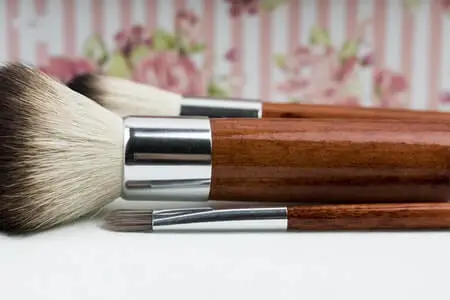Unless you’re a professional artist, you may not think much about the type of hair used for paintbrushes. But different types of animal hair can produce different results when painting.
The truth is, almost any type of hair has at some point been used to make a paintbrush. But which hairs work best? And why are they so popular among painters? Keep reading to find out!
Many paintbrushes are a blend of hair from different animals. The animal hair is often higher quality than that used for the tip, where brush durability takes priority.
Camel Hair
Camels have been bred for their hair in the Middle East and Asia since at least 500 B.C. Today, camel hair is still valued by artists who find its quality to be far superior to other natural bristles.
Camel’s hair has an extra-soft feel when compared with other natural fibers or hog bristle brushes, making it luxurious and easy to use for any painting project. It also holds more water than sable fur, which makes it ideal for creating fine lines of consistent width without having to go over them, again and again, to build up color or pigment.

Camel’s hair is not considered an endangered resource, but it is increasingly rare due to the difficulty of harvesting it.
Sable Hair/Fur
Sables are very popular among artists for their supreme quality and soft touch.
The finest paintbrushes are made from red sable fur; these brushes can be identified by their very fine points, which allow them to produce the thinnest lines possible without compromising brush durability.
What makes sable’s unique is that it has tapered hairs around one central shaft, allowing them to hold more liquids in its belly than other synthetic fibers.
This means that when painting with watercolors, you need less water on your brush before dipping into a paint mixture – saving you time and ensuring you get the best results possible from your paint.
However, sable hair has been an endangered species since 2004 due to over-harvesting. In fact, the American sable population has dropped from more than 1 million in 1930 to 188,000 today. But other types of fur have been known to work just as well for artists’ brushes – including squirrel, goat, badger, or marten.
Squirrel Hair
Squirrel bristles are very popular among oil painters because they’re considered a good alternative to red sable fur.

They’re also great at picking up large amounts of liquid pigment one dip at a time – suitable for wet-in-wet techniques where the entire painting is applied wet with pigment.
Goat Hair
Goat hair paintbrushes are not as soft and delicate as sable brushes, and they’re considered a good choice for beginners who can’t afford higher-end brushes.
Today, goat hair is often blended with other types to make the brush softer.
Badger Hair
Badger hair paintbrushes are similar to hog bristle brushes in their durability and ability to hold lots of pigment. They may be used for both oil painting and watercolors, depending on the desired effect.
Badger’s hair holds a lot of liquid pigment, making it useful for watercolor painting.
Marten Hair/Fur
Marten fur is much like a squirrel in that it holds a large amount of liquid when dipped into a puddle or well of watercolor or pigment mixture – making it a good choice for blending.

Marten fur is also one of the softest natural bristles, but it’s not as durable as hog bristle brushes.
Hog Bristle/Boar Hair
Hogs bristle brushes are most useful when artists want a stiff, sturdy brush that can withstand repeated cleanings and heavy use with thick paint.
They’re considered an excellent brush choice for oil painters who create textured, impasto effects in their work. Hog bristle brushes are excellent for oil painters who are after a stiff brush that can hold lots of paint.
Final Thoughts
The hair of different animals is used to make paintbrushes depending on what type of result an artist is looking for in his or her work.
For example, a watercolor artist might prefer a brush made from goat hair to achieve the delicate effect of watercolors.
Essentially, any animal hair that is soft and has the ability to hold liquid may be used in paintbrush production. However, depending on what you’re painting and what result you’re looking for – different brushes will be better suited to your needs.
